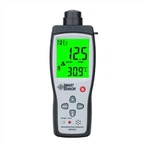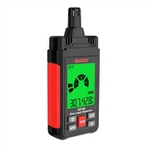How to use a digital multimeter to determine whether a motor is good or bad
1. Resistance to ground (use the high-grade ohm gear): the insulation resistance between the motor winding (three-phase) and the casing is generally required to be above 2M, and the requirement can be lowered as appropriate for use in humid, acid-base and other environments. Generally not less than 0.5M.
2. Phase-to-phase resistance (use high-grade ohms): the insulation resistance between windings of different phases is generally required to reach 2M or more, and the requirements can be lowered as appropriate for use in humid, acid-base and other environments, generally not less than 0.5M.
3. Three-phase resistance value (use the low gear of the ohm gear): the resistance value of the three-phase winding itself requires that the resistance value of the three-phase winding be roughly balanced (accurate data can only be obtained by measuring with a digital meter, and the requirements for different motor capacities are different. require no more than 2%).
A motor is a device that converts electrical energy into mechanical energy. It uses energized coils (that is, stator windings) to generate a rotating magnetic field and acts on the rotor (such as a squirrel-cage closed aluminum frame) to form a magnetoelectric force rotation torque. Motors are divided into DC motors and AC motors according to the power used. Most of the motors in the power system are AC motors, which can be synchronous motors or asynchronous motors (the motor stator magnetic field speed and rotor rotation speed do not maintain synchronous speed). The motor is mainly composed of a stator and a rotor. The direction of the current-carrying wire in the magnetic field is related to the direction of the current and the direction of the magnetic field line (magnetic field direction). The working principle of the motor is that the magnetic field acts on the force of the current to make the motor rotate.






